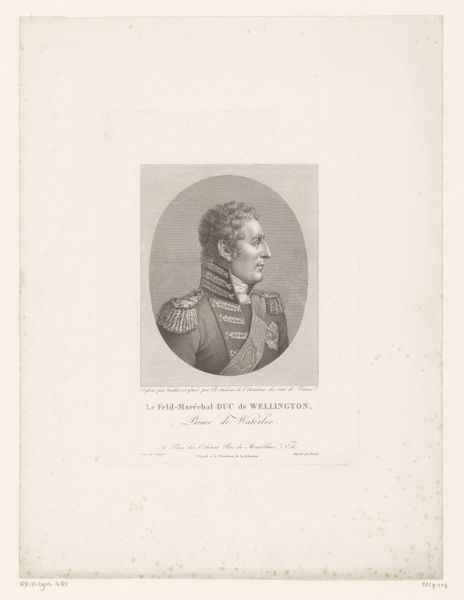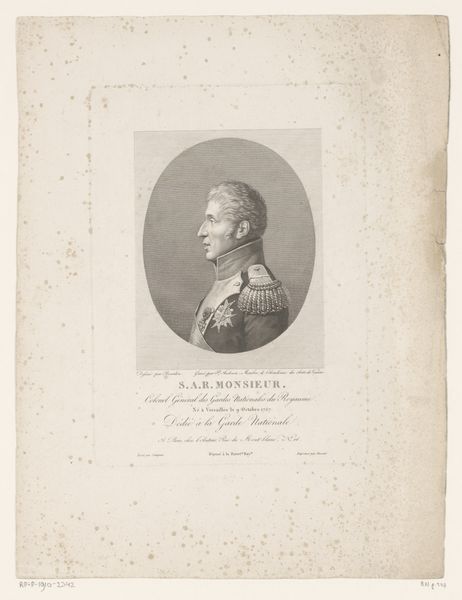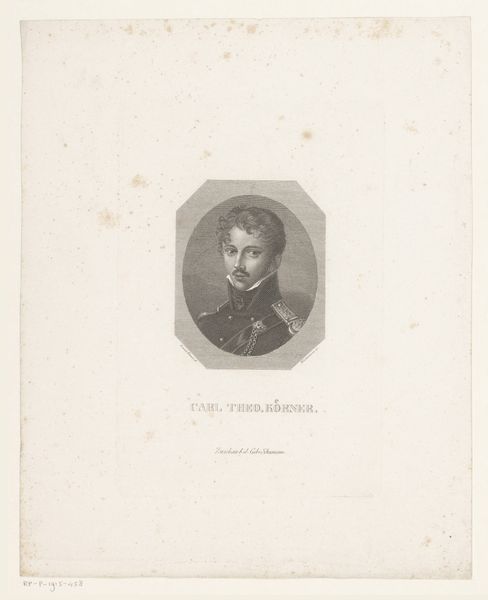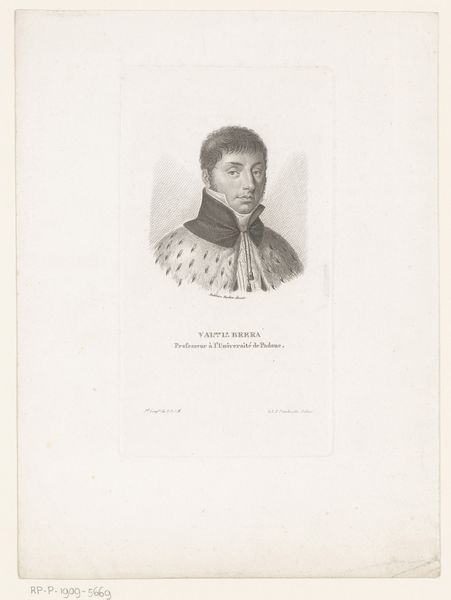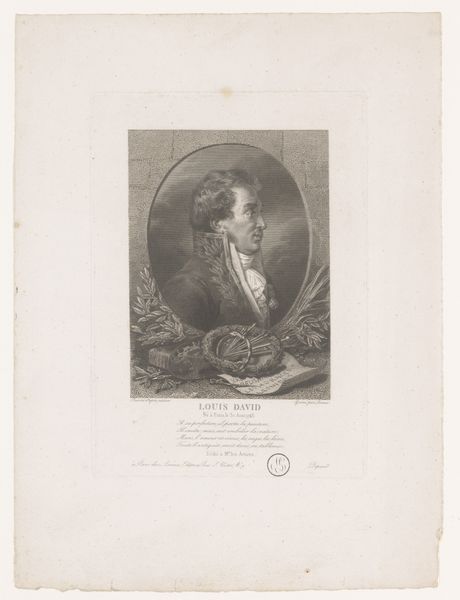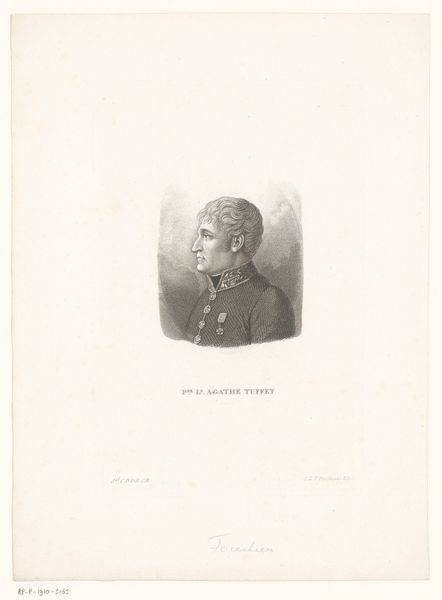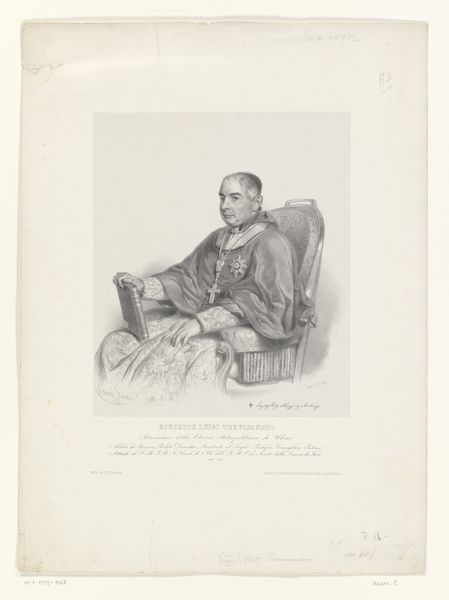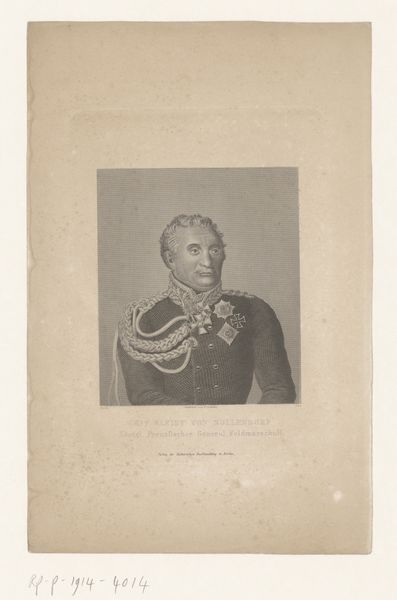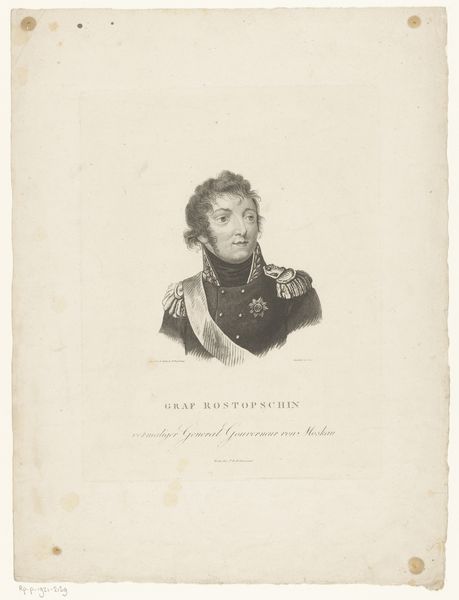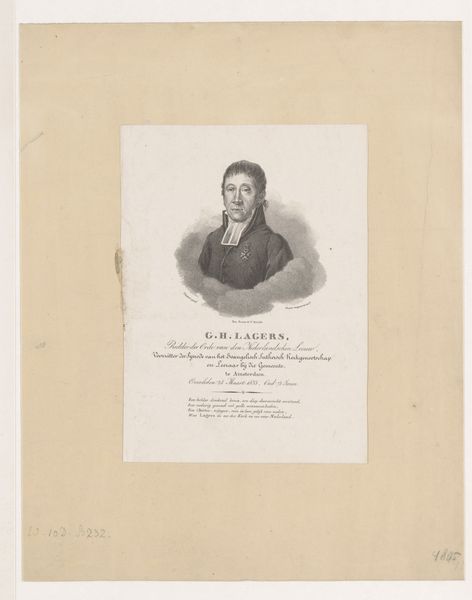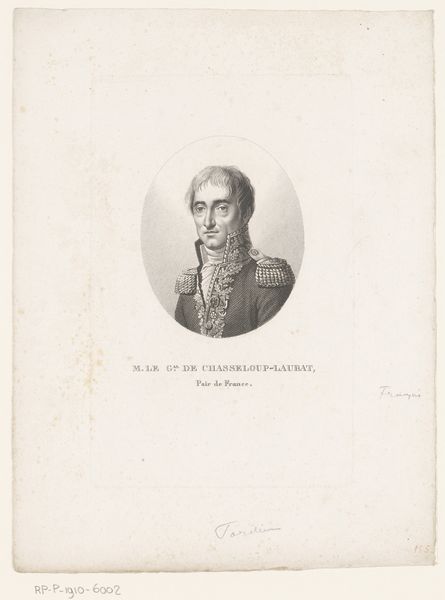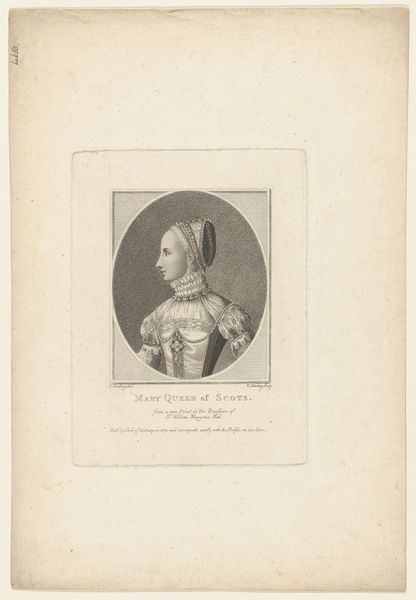
print, engraving
#
portrait
#
neoclacissism
# print
#
old engraving style
#
history-painting
#
engraving
Dimensions: height 239 mm, width 176 mm
Copyright: Rijks Museum: Open Domain
Curator: This is a portrait of Pierre Claude Pajol. This engraving from 1806-1866 depicts a celebrated military figure in exquisite detail. Editor: There's a stark formality to it, isn't there? The subject almost seems to be encased within the frame, an effect heightened by the tight circular border around his bust. The light seems almost to emanate from him. Curator: Precisely. These kinds of portrait engravings often played a vital role in shaping the public perception of influential individuals, like generals and political figures during this period, think Napoleon! His gaze looks past us towards something greater. Editor: It feels incredibly controlled. Every detail in his uniform, from the intricate embroidery to the gleaming medals, suggests power, honor, and a commitment to the prevailing socio-political order. Do you see it playing on classical tropes, echoing imagery of the past? Curator: Absolutely! Neoclassicism consciously invokes classical ideals of virtue and heroism through carefully considered symbols. This visual language helped bolster political narratives and strengthen bonds of shared cultural identity among the elite classes. In this case, the oval frame might be referencing ancient Roman portraiture. The print as medium also made it accessible. Editor: The rendering of his face— the high forehead, firm jawline — feels very deliberate in constructing a heroic image, while at the same time masking more nuanced humanity. As a cultural object, it says as much about how power wanted to be seen. The very texture feels dry, which reduces the impact in my opinion. Curator: I can see that perspective. Yet this coolness itself became a signifier of authority, fitting for an era steeped in notions of duty and the grand sweep of history. Its power lies in its carefully calibrated performance of the "heroic," a construct designed to inspire. Editor: Right, it’s less about intimate truth and more about public service— and its visual language reinforces existing social structures through very calculated means, wouldn't you agree? These weren't portraits hanging in private residences— they existed in the world. Curator: Definitely, and in that sense, Pajol almost exists less as an individual and more as a representative of values carefully constructed and upheld. The medals are also like an iconography of patriotism. Editor: Well, it gives you much to think about beyond just the figure of Pajol himself. Curator: Indeed. This engraving functions as both historical document and carefully crafted ideal, making its legacy very powerful to viewers now.
Comments
No comments
Be the first to comment and join the conversation on the ultimate creative platform.
